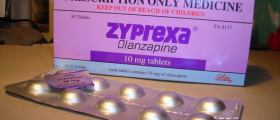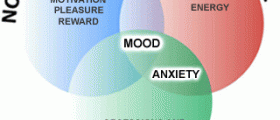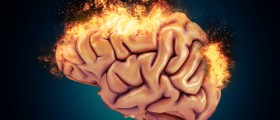
Somnolence is a side effect of olanzapine reported with the use of higher doses of medication. Other frequent side effects on the nervous system includes insomnia, dizziness, speech problems, amnesia, apathy, confusion, tremor, paresthesia, agitation, aggression and nervousness. Rarely, cases of akinesia, abuse of alcohol and stimulants, facial paralysis, tardive dyskinesia are reported. Possible serious side effects are epileptic seizures, neuroleptic malignant syndrome, somnambulism and Parkinson’s disease.
Side effects on the heart are frequent and includes tachycardia, hypertension (high blood pressure) and postural hypotension, sometimes problems with the heart rhythm, heart failure, migraine, hemorrhage, and palpitation. In older patients treated for dementia olanzapine slightly increases the risk of sudden death or heart failure, and therefore it is not recommended by FDA for use in those cases. In rare cases this medication increases the risk of thromboembolism in elderly patients.
Metabolic changes with the use of olanzapine may include increase of appetite and weight gain and food cravings and elevation of triglycerides, lipids, cholesterol and sugar levels in the blood. Olanzapine is connected to some cases of acidosis, cyanosis, bilirubinemia, dehydratation and hypokalemia andhyponatriemia.
Gastrointestinal problems are common, and those include dry mouth, constipation, thirst, vomiting, dyspepsia, sometimes gastritis and gastroenteritis, melena, mouth ulcerations, rectal hemorrhage and intestinal blockage. Nausea and vomiting are side effects that are dose dependant.
Use of olanzapine may affect the liver, increase the level of liver enzymes, and rarely induce hepatitis, fatty liver or liver injury.
Older dementia patients treated with olanzapine may have an increased risk of fatal pneumonia or lower respiratory tract infection.
Olanzapine affects the endocrine system and might induce hyperprolactinemia, hyperglycemia, and diabetes mellitus, rarely fatal diabetic ketoacidosis (may be fatal) and goiter. It has been proved that that patients on olanzapine are at an increased risk of developing hyperglycemia and diabetes mellitus.
Hematologic side effects are rare and include anemia and problems with blood cells.
Abnormal vision, conjunctivitis and amblyopia are common side effects of the olanzapine use. Some accommodation ablormalities, blepharitis, cataract, diplopia, dry eyes, eye hemorrhage, inflammation and pain have been reported. Rarely there are cases of glaucoma, corneal lesion, keratoconjunctivitis, , miosis, mydriasis, pigment deposits in the lenses and blepharoclonus.
Extremity pain and joint pain are reported in 5% of the patient using olanzapine.
Dermatologic side effects might include drug-induced acral melanosis, eruptive xanthomas, ecchymosis, sweating, acne, and dry skin. Hair loss, seborrhea, contact dermatitis, eczema, rash, urticaria, pruritus, skin discoloration and ulcer have also been reported, as well as hirsutism, papular rash and a case of hyperpigmentation.
There are serious pshychiatric side effects that come with the use of olanzapine – depression, euphoria, delusions, and even schizophrenic reaction and suicide attempts.

















Your thoughts on this
Loading...